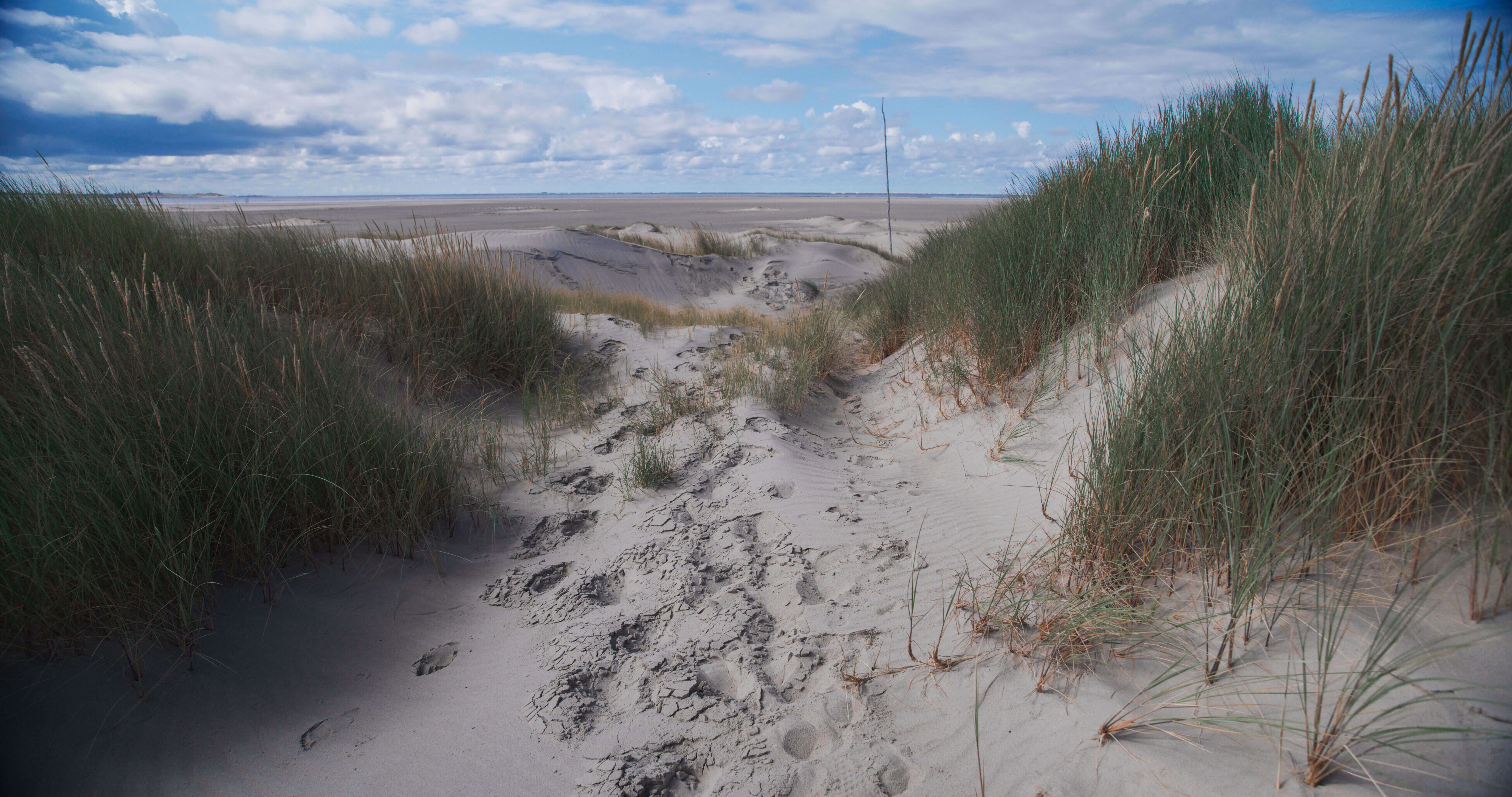Location

Winter walks on Texel
Winter on Texel has its own unique charm—especially because it’s wonderfully quiet. You might even have the beach all to yourself. Or wander through De Muy nature reserve without seeing a single soul. Fancy a winter walk on Texel? Here are some great tips!
Walking through De Slufter
Texel’s most famous nature reserve, located on the North Sea coast in the north of the island, is beautiful even in winter. When the wind whips up the waves, seawater often flows inland, allowing salt-loving plants like samphire to thrive—it’s even edible! Before you enter De Slufter, stop at the viewpoint. From here, you get a stunning view over the entire area and its creek system. Winding paths lead you through the dunes or toward the sea. If you love long walks, you can head through the dunes to De Cocksdorp, or walk along beach and dunes to De Koog. Tip: wear sturdy hiking boots or wellies—it can get quite wet.
All alone at De Hors
The sandy southern tip of Texel is a breathtaking place to walk. Park near the Horsmeertjes and follow the dune path by the water to the beach. A vast sandy plain awaits. Here, you can see young dunes forming. On sunny days, you might even spot seals along the shoreline. From De Hors, you can also walk to Paal 9 beach and warm up with hot chocolate or a Juttertje at beach pavilion Paal 9. Hardcore hikers can return via the beautiful dune trail along Witteweg back to the Horsmeertjes and parking lot. Tip: plan your route so you walk down the beach with the wind at your back—it makes a big difference in the cold!
Bertusnol and De Muy
De Slufter might be Texel’s best-known reserve, but De Muy next door is just as stunning. There are several walking routes marked with colored posts (see below). Park at the large lot near Paal 21 and head straight into the dunes. De Muy lies between De Koog and De Slufter. Former farmland has been transformed into natural habitat. You might spot Highland cattle, and the oldest spoonbill colony of the Wadden area nests here. A 2009 restoration brought back native vegetation and biodiversity—shallow, winding ditches now support species like the northern vole and natterjack toad. In the area known as "de Nederlanden," you’ll find Bertusnol, a high dune offering an incredible panoramic view—well worth the climb!
Walking in the Texel forest
Prefer more sheltered walks? Then De Dennen, Texel’s forest, is a great option. You’ll find plenty of marked routes of varying lengths. Choose between paved paths or soft forest trails. Walking with kids? It’s fun for them too—there are several forest play areas and two lookout towers. The Fonteinsnol is a must. Fun fact: it’s pronounced Fon-TEINS-nol, with emphasis on the middle syllable. “Nol” means high dune in Texel dialect. There used to be a fountain here. From the top, you get a 360-degree view over the Texel Dunes National Park, of which the forest is part. Not up for stairs? Try Kampeersnol, a lower viewpoint that’s wheelchair-accessible and overlooks the dunes toward the North Sea.
Choose your color
In the National Park, walking routes are marked by color:
- Blue posts: circular routes
- Yellow posts: point-to-point routes
- Red posts: nature trails
- Green posts: accessible only outside the breeding season (roughly August 1 – March 1)
Walking from your holiday home
How great is it to start your walk right from your accommodation? Vakantiehuizen Texel’s cozy homes are located right by the Texel forest. Fonteinsnol is just a stone’s throw away—an ideal starting point for a delightful winter walk. Several cafés and restaurants nearby offer perfect pit stops for lunch or a warm drink.



